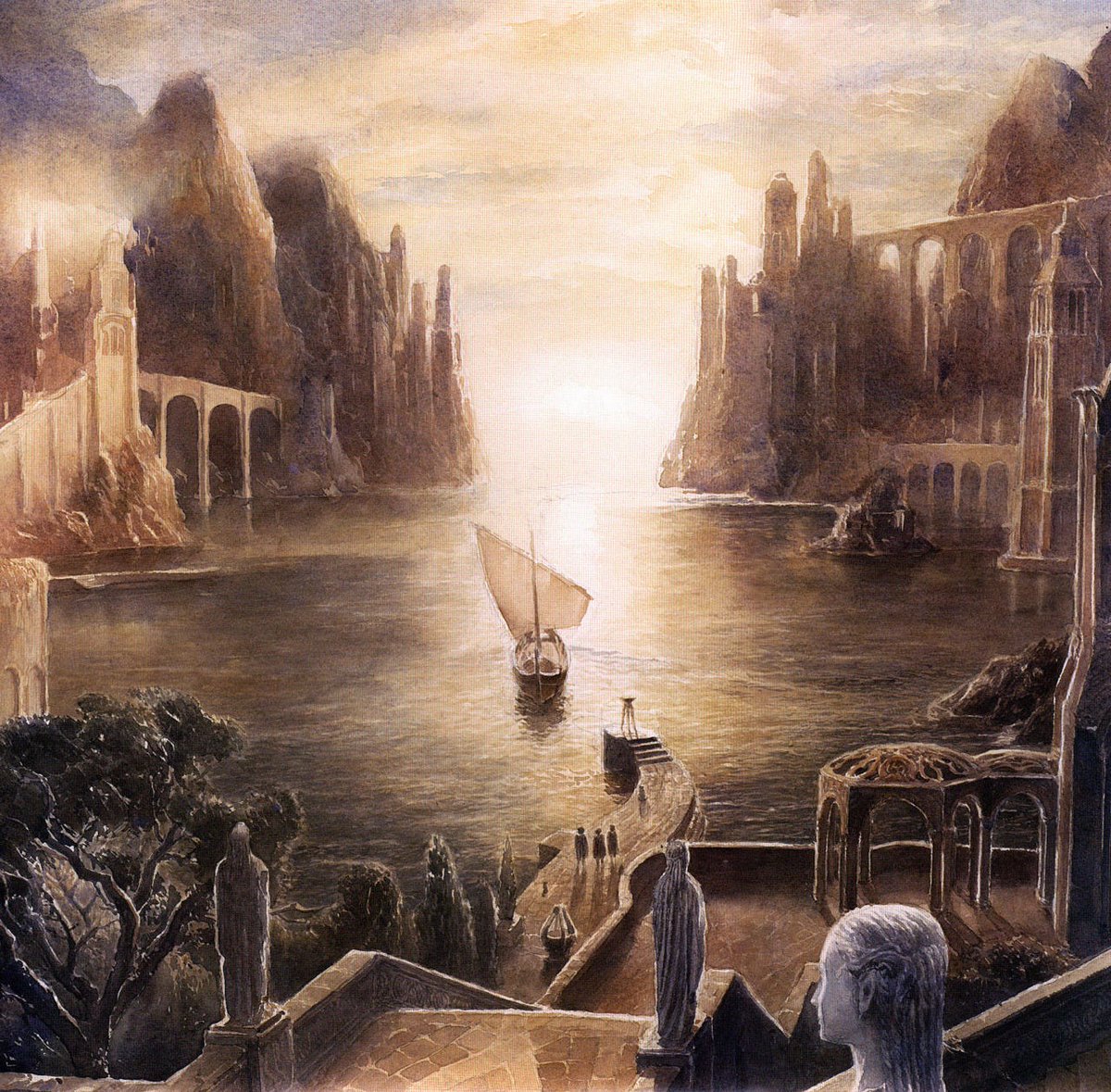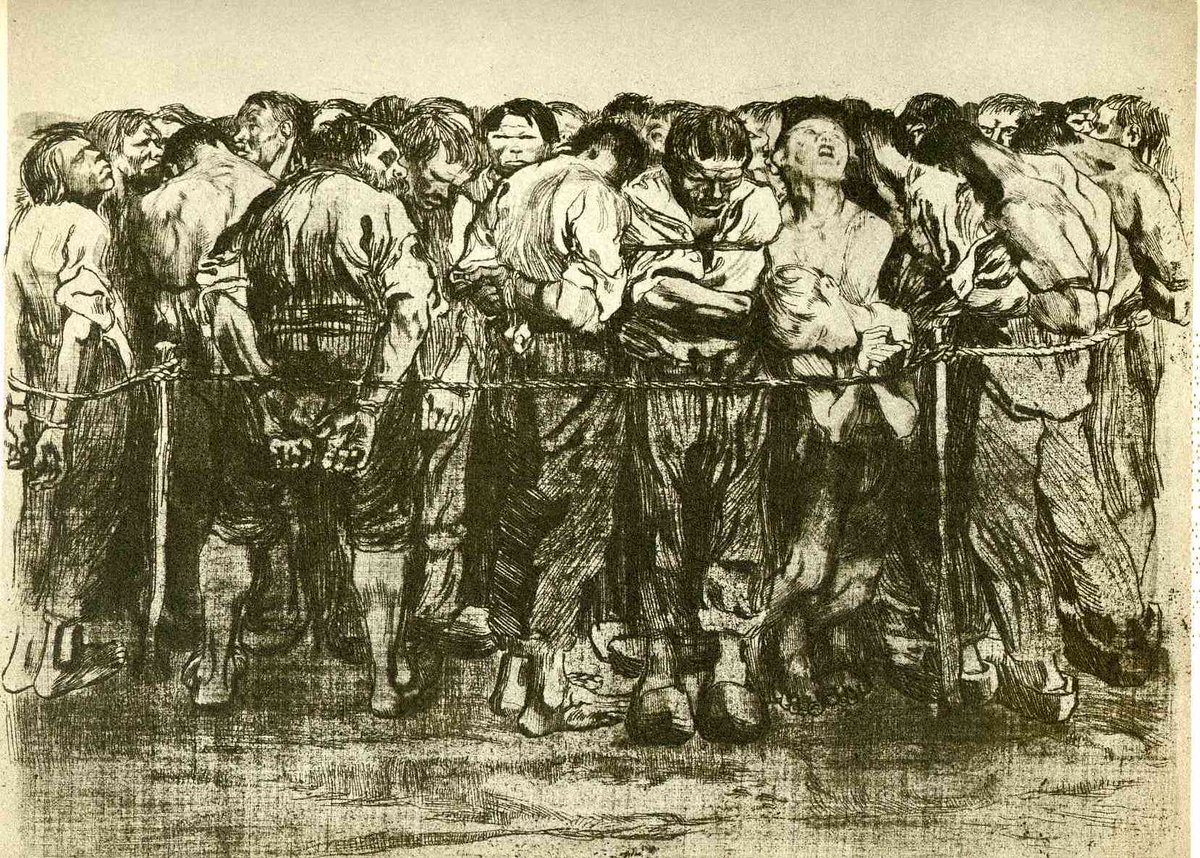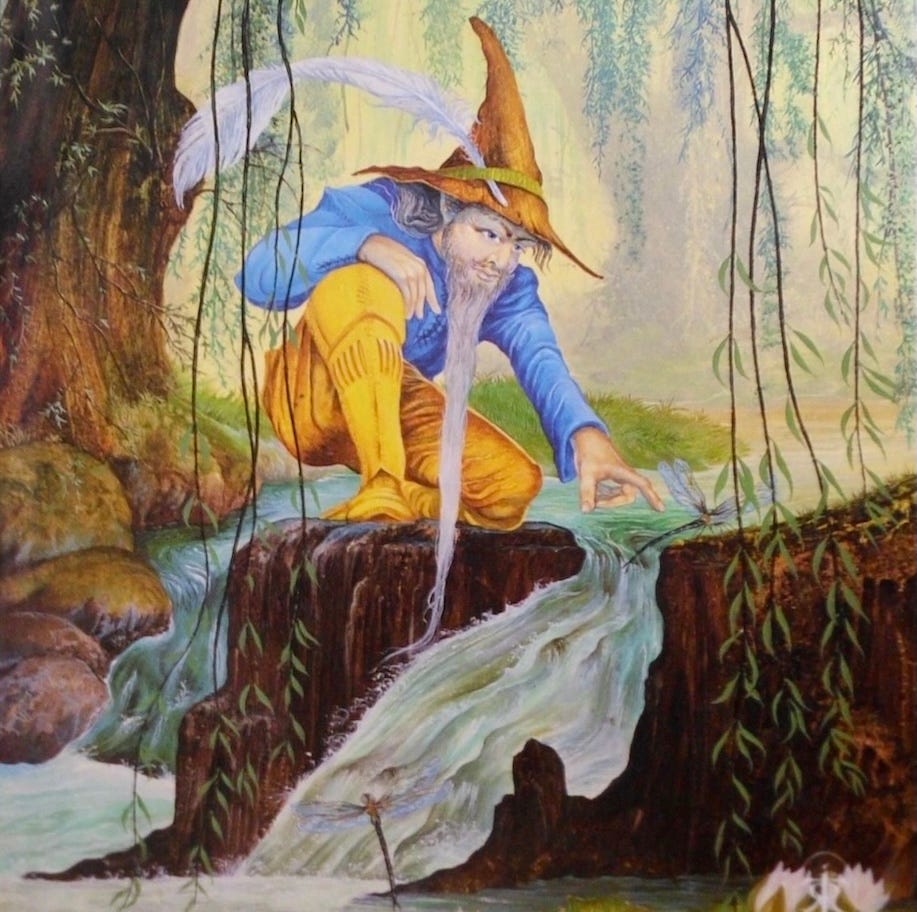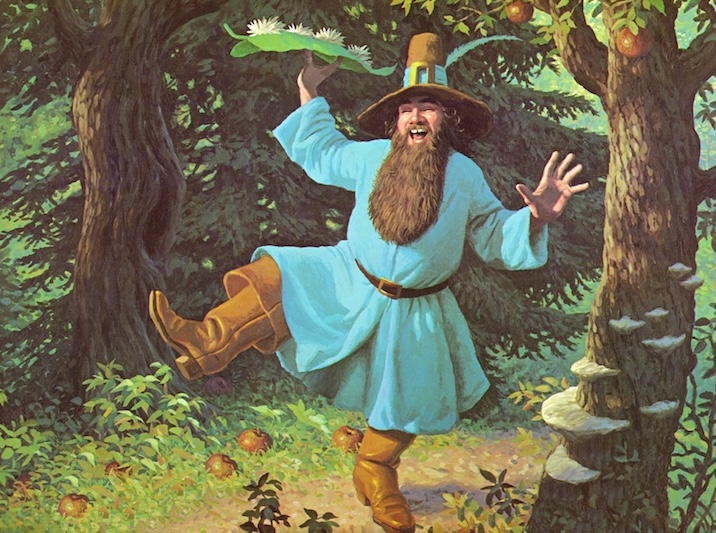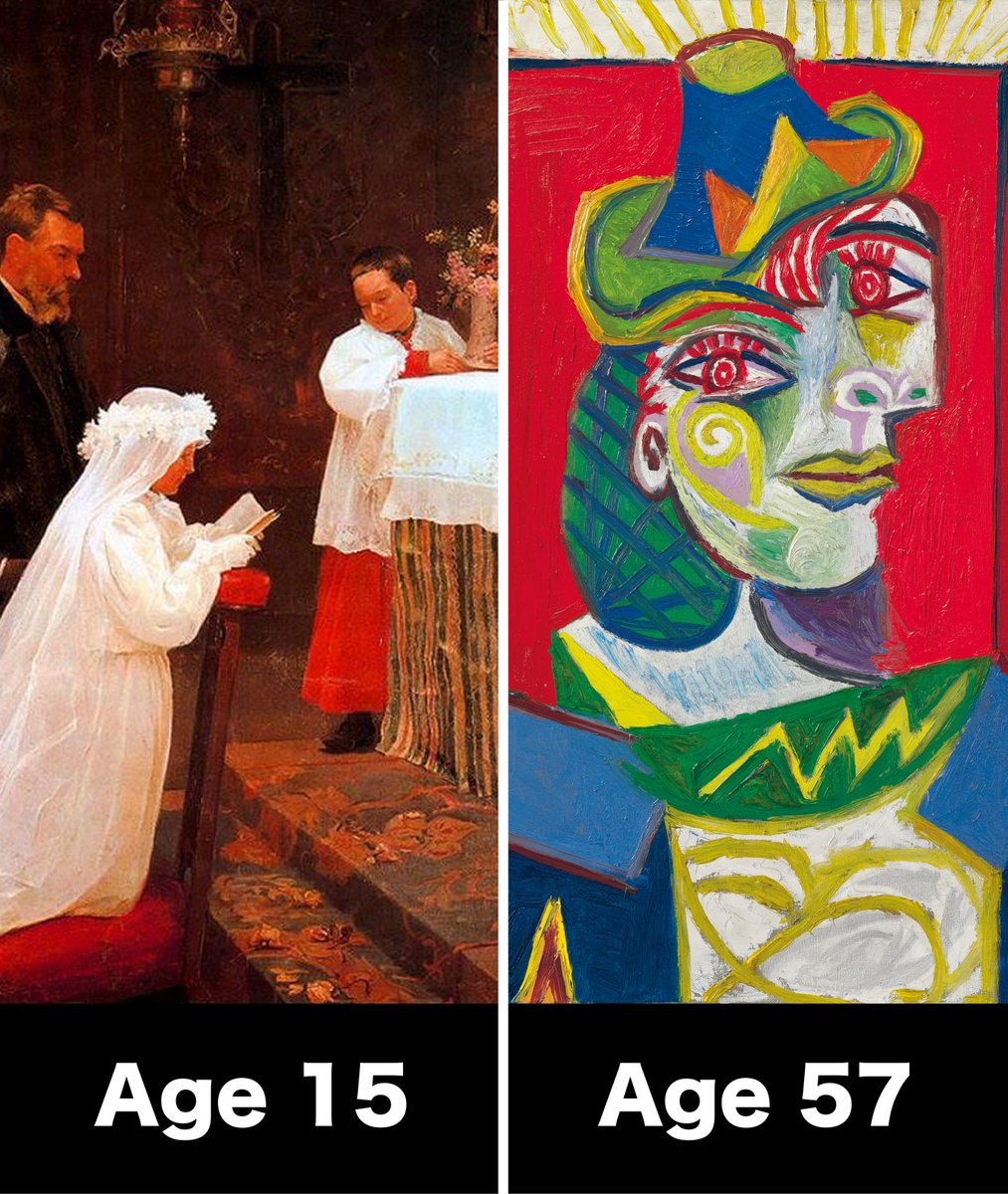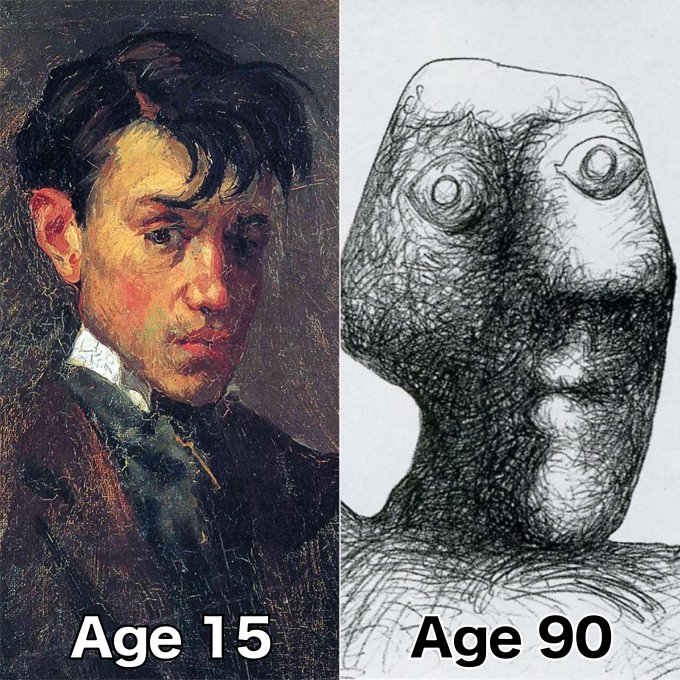This 500-year-old portrait may seem ordinary, but it's one of the most mysterious in history.
There's so much detail that you can read every musical note on this small page.
But look closer — an unsettling secret is hiding in plain sight... 🧵
There's so much detail that you can read every musical note on this small page.
But look closer — an unsettling secret is hiding in plain sight... 🧵
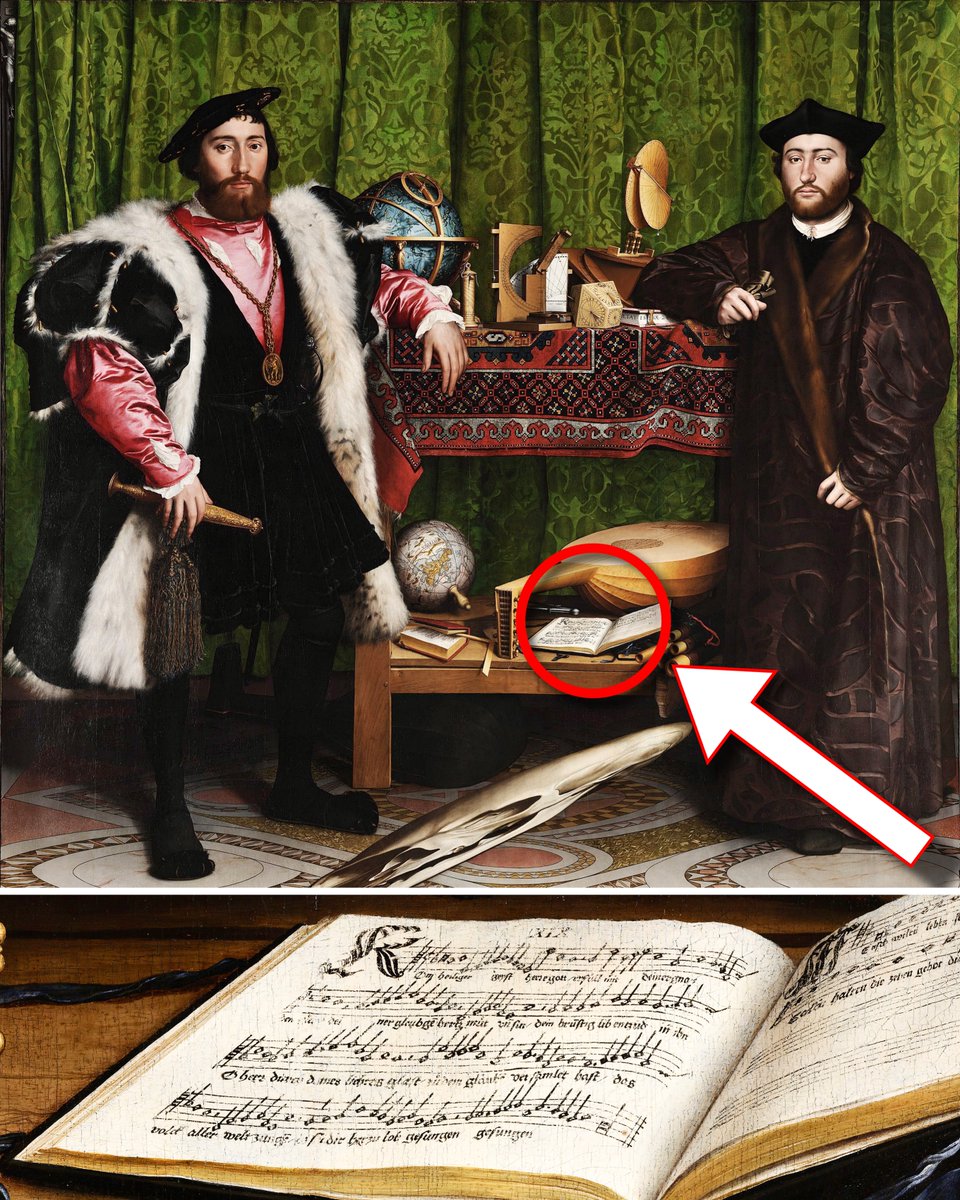
The more you study Hans Holbein's "The Ambassadors," the more you realize why it's one of history's most analyzed paintings.
It's so detailed you can feel every thread in this rug...
It's so detailed you can feel every thread in this rug...

Or see each individual page of this book — and even work out which arithmetic text it is (by German astronomer Peter Apian).
But why bother rendering every object so meticulously?
But why bother rendering every object so meticulously?

Well, the painting depicts French diplomat, Jean de Dinteville (left) and bishop, Georges de Selve (right).
But they are not the real focus. What's more interesting are the objects between them...
But they are not the real focus. What's more interesting are the objects between them...

On the top shelf are measuring devices to do with the celestial realm: a celestial globe, sundial, torquetum.
Below are objects of the earthly realm: a globe, musical instruments, and notation.


Below are objects of the earthly realm: a globe, musical instruments, and notation.


They're all symbols of human understanding, and fields that these men have mastered.
All their earthly accomplishments are on display: the globe even shows the position of Jean's château in Polisy.
All their earthly accomplishments are on display: the globe even shows the position of Jean's château in Polisy.

But we've still only scratched the surface. Holbein's cleverness goes far deeper.
Look very closely and you'll notice the lute has a single broken string — a symbol of some kind of fracture...
Look very closely and you'll notice the lute has a single broken string — a symbol of some kind of fracture...

Next to the lute, a book of hymns by none other than Martin Luther.
This painting was made when the Protestant Reformation was in motion, at which it makes a subtle prod. But the theological hints don't end there...
This painting was made when the Protestant Reformation was in motion, at which it makes a subtle prod. But the theological hints don't end there...

Look at the celestial globe and you'll begin to realize not a single detail is accidental.
It shows the sky on April 11, 1533 — Good Friday. Precisely 1,500 years after the death of Christ...
It shows the sky on April 11, 1533 — Good Friday. Precisely 1,500 years after the death of Christ...

So, what ties all this together?
You probably noticed that strange blur in the foreground. It's an anamorphic image...
You probably noticed that strange blur in the foreground. It's an anamorphic image...

With all the earthly knowledge and possessions these men have collected, what does it all mean in the end? What will the division of the Reformers achieve?
Eventually, death comes for us all — and their transient lives mean nothing...
Eventually, death comes for us all — and their transient lives mean nothing...

Or don't they?
Notice the painting is 207 x 209.5 cm. Very nearly, but not quite, a perfect square — why?
Notice the painting is 207 x 209.5 cm. Very nearly, but not quite, a perfect square — why?

What if you draw a perfect square, starting on the right side of the painting?
Only one thing is left outside the square, and outside our earthly understanding...
Only one thing is left outside the square, and outside our earthly understanding...

A small, half-obscured crucifix, tucked behind the curtain.
That this lies outside the square, an ancient symbol of Earth, is no accident...
That this lies outside the square, an ancient symbol of Earth, is no accident...

For all our ability to conquer the globe, or measure the position of the stars and planets...
True meaning is found not in earthly pursuits, but in spiritual ones.
True meaning is found not in earthly pursuits, but in spiritual ones.

Holbein renders earthly reality in such detail that we can't believe it's only brushwork.
But we can't even see the skull at first — just as we struggle to comprehend the transience of life.
But we can't even see the skull at first — just as we struggle to comprehend the transience of life.

If threads like this interest you, I go deeper in my FREE newsletter — do NOT miss tomorrow!
84,000+ people read it: art, history and culture 👇
culture-critic.com/welcome
84,000+ people read it: art, history and culture 👇
culture-critic.com/welcome
There's simply too much detail to cover in one thread.
Even the floor is significant — Holbein borrowed the mosaic floor of Westminster Abbey, itself a diagram of the cosmic order...


Even the floor is significant — Holbein borrowed the mosaic floor of Westminster Abbey, itself a diagram of the cosmic order...


If you enjoy these breakdowns, please give the initial post a retweet! 🙏
And I'll keep doing more of them...
And I'll keep doing more of them...
https://x.com/Culture_Crit/status/1838658871919001693
• • •
Missing some Tweet in this thread? You can try to
force a refresh




